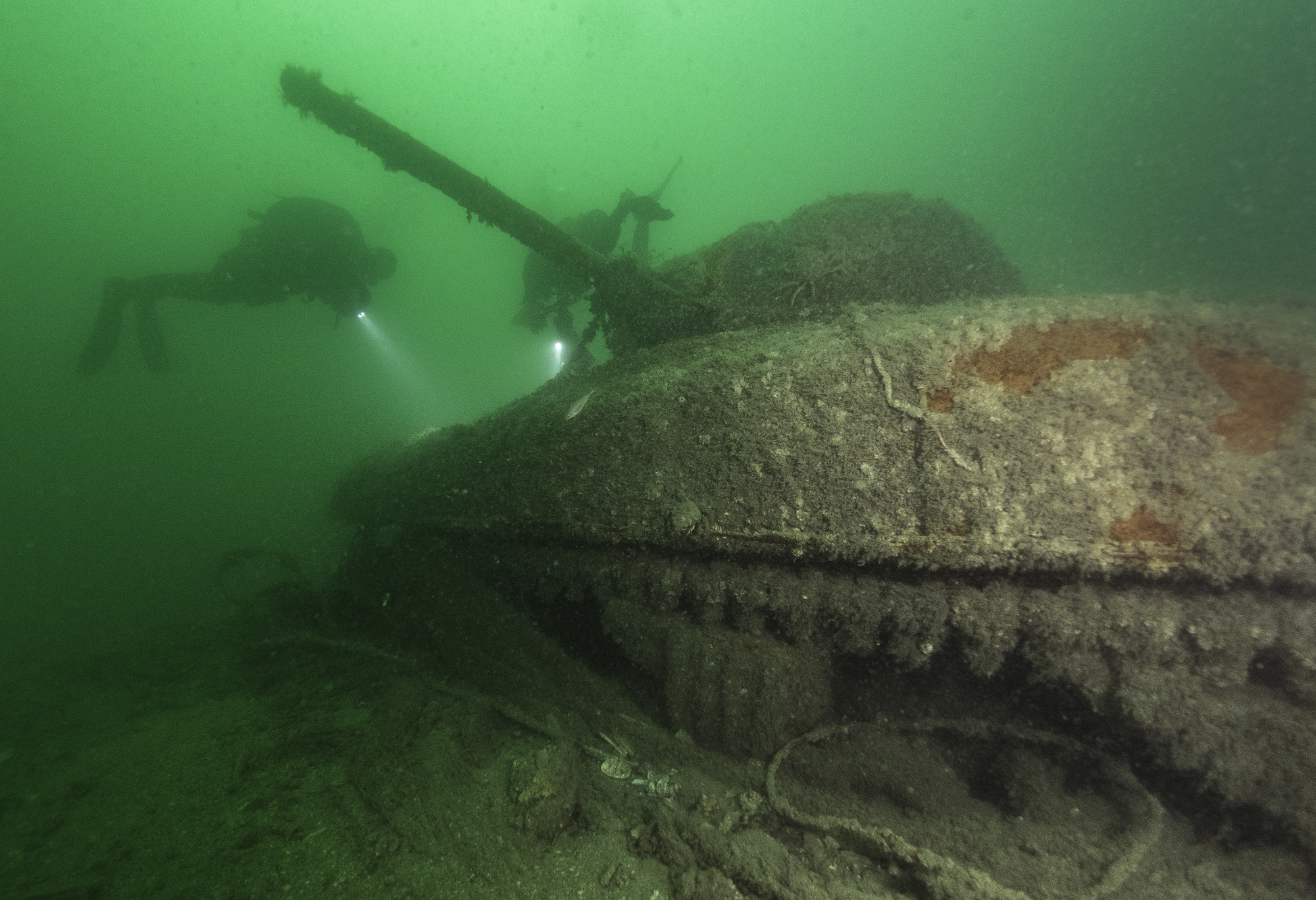
- Home
- Immersion on the wrecks of the Normandy landings
- The importance of service vessels
In addition to buoy tenders, several types of support vessels were mobilised during the Normandy landings. Among these, tankers and tugboats played a vital role.
Useful tankers
On 12 August 1944, the British installed a pipeline to bring fuel to Cherbourg (Operation PLUTO). However, during this laborious process the use of tankers was necessary. Several types were subsequently mobilised by the Allies to transport the fuel necessary for their advancement.
The Empire Roseberry
This British steamer, launched in 1944, was one of the ships that were converted into tankers. On 24 August 1944, while joining a convoy bound for England, it struck a mine. The petrol residues exacerbated the damage and a second acoustic mine was detonated by the steam and exploded aft on the port side of the ship. Because all the lifeboats were destroyed by the first explosion, the men jumped into the water when the order to evacuate was given, but 13 did not survive. Today, only the stern half of the 89 m long cargo ship remains at a depth of about ten metres.
The “Chants”
The Channel Tankers, known as “Chants”, were responsible for supplying fuel to the barges during the early days of the Normandy landings, before being reclassed as all-purpose supply ships following Operations TOMBOLA and PLUTO. They were rapidly constructed, with a double steel hull and prefabricated parts (28 pieces manufactured in different factories in Great Britain and then assembled at the shipyards). In total, 43 “Chants” were assembled in five different yards between February and July 1944.
The well-preserved wreck of Channel Tanker 69, rests at a depth of about 40 metres ten nautical miles north of Luc-sur-Mer. Launched on 10 March 1944, it capsized in rough weather on 16 June on the way to Normandy. It remained overturned, floating just below the surface, before being sunk by the Royal Navy for safety reasons.
The Landing Barge Oilers
In addition to large units, the Allies also had small tank barges, Landing Barge Oilers (LBO), which were used to refuel smaller landing craft. Equipped with a 30-40 tonne tank, they were considered to be floating bombs, which explains their unpopularity. One of these LBOs was identified by Caen Plongée 11 nautical miles north of Bernières-sur-Mer. Divers can still recognize the rounded ends of the fuel tank and, between them, the round metal frame that was used to fill the tank.
A well-preserved tugboat
Fourteen salvage tugs and 216 conventional tugboats were mobilised for the Normandy landings. North of Pointe de la Percée, a very well-preserved wreck has long been identified as the HMRT Sesame, an Assurance class rescue tug sunk on 11 June 1944. However, while the general form of the vessel is consistent with that of a tug, its dimensions (38 m instead of the Sesame’s 48 metres) and its state of conservation have led the DRASSM to refute this identification. The Sesame was hit by a German torpedo boat on the starboard side, whereas no impact is evident in that part of this wreck.
Additional research conducted by divers from the British Southsea Sub-Aqua Club (BSAC) identified the site as another tug, the Dundas, based on its dimensions, specific features (engine, towing point, propeller) and its history. Originally named Atlantic, this second tug built in 1919 in the Netherlands was renamed Dundas in 1925, prior to being requisitioned by the Royal Navy in October 1942. On 23 June 1944, after colliding with an American ship near the actual Normandy Bridge, it ran aground, but only sunk in July when the USS Bannock attempted to tow it.
Partners and authors
Associated media
Open Media Library
Multibeam echo sounder survey of the Empire Roseberry

The Empire Roseberry’s engine block

Tanker of the same type as the Channel Tanker 69
Multibeam echo sounder survey of the Channel Tanker 69

Fuel pumping hoses in the hold of the Channel Tanker 69

Archival photograph of a Landing Barge Oiler
Multibeam echo sounder survey of a Landing Barge Oiler

One end of the fuel tank visible on the wreck of a Landing Barge Oiler
Multibeam echo sounder of the the HMRT Dundas

The tugboat Atlantic, the future Dundas

